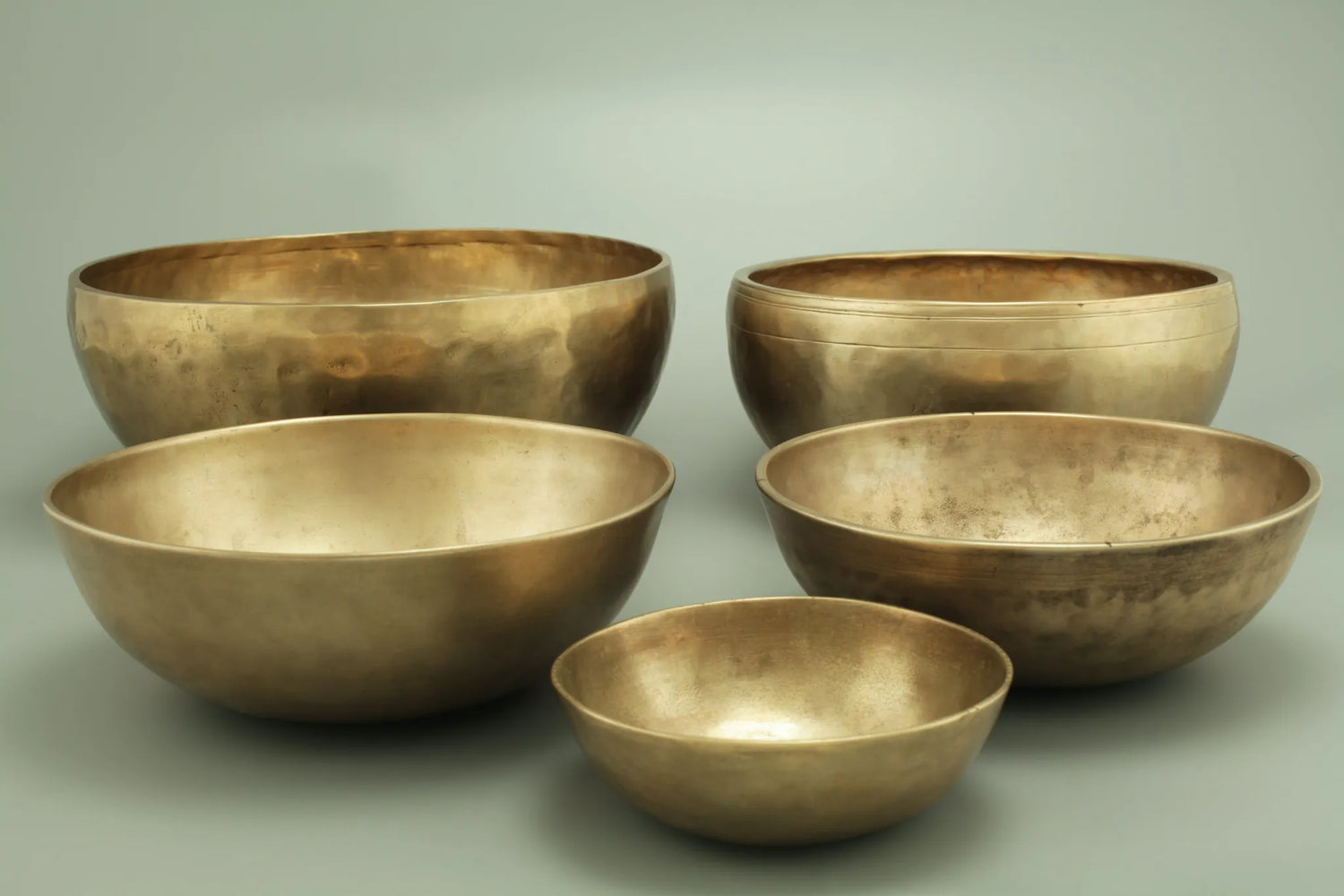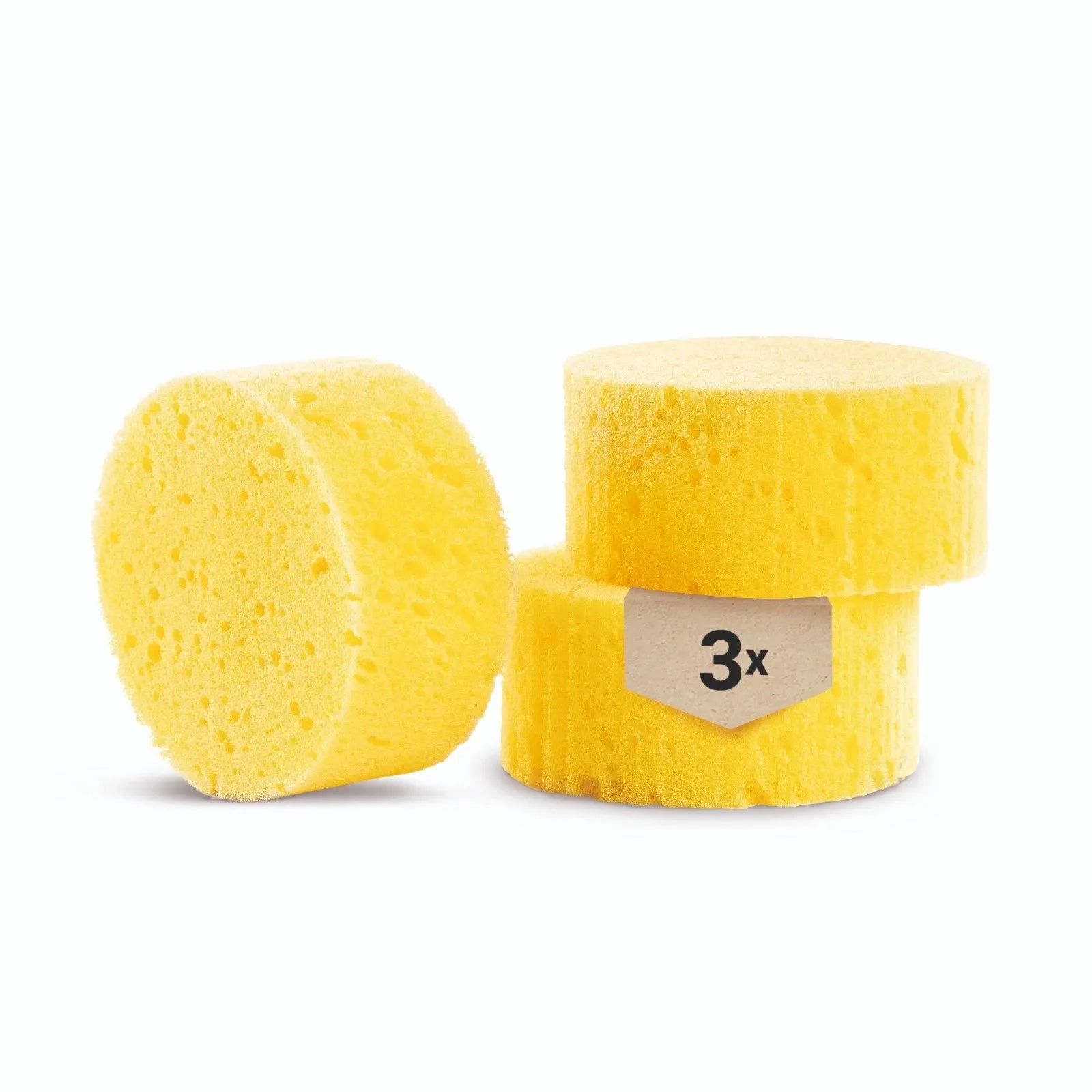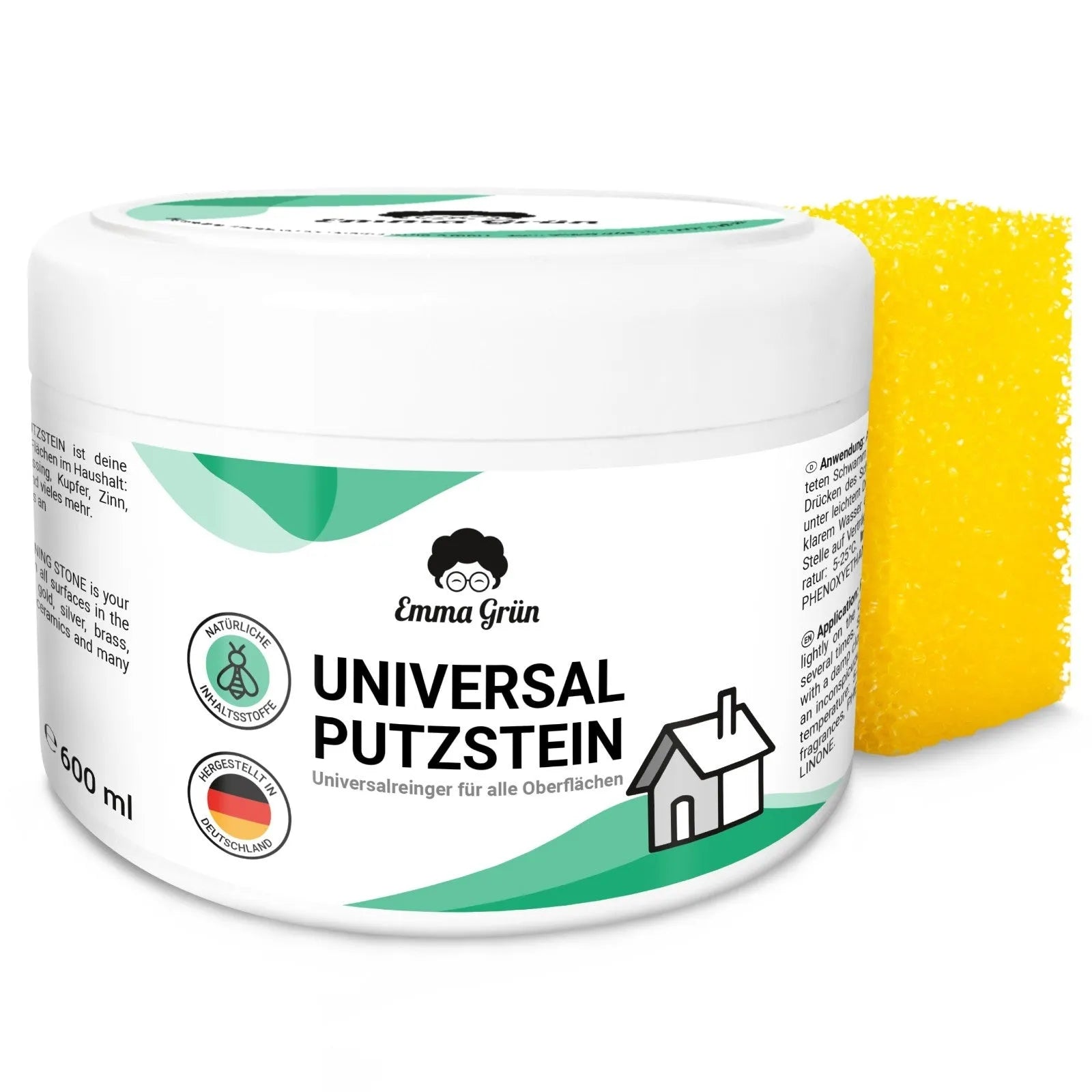Brass is an alloy of copper and zinc and is known for its gold-like color and versatile uses. From decorative objects to musical instruments, brass has applications in everything. However, a common problem with brass is oxidation, which leads to the formation of verdigris. Verdigris, a layer of copper carbonate, is formed when copper in brass reacts with carbon dioxide and moisture in the air. This natural oxidation can affect the appearance of brass objects and therefore requires regular care.
Regardless of whether it is light dirt or stubborn verdigris , there are a variety of methods, from simple polishing to the use of household remedies, to keep brass in its best condition. The following article tells you what these are and how to implement the measures correctly.
Cleaning brass: the basics
Cleaning brass is an important step in preserving the beauty and shine of the alloy. There are various treatment methods that achieve optimal results depending on the degree of oxidation and the desired result . The following methods are available:
1. Polish brass for light dirt and fingerprints
For slightly dirty brass, polishing with a soft cloth is recommended. To remove fingerprints and light dirt, it is enough to gently rub the material. For more shine, you can use a cleaning stone that cleans and polishes the brass at the same time.
2. Cleaning brass for deeper contamination
For heavier soiling, a milder cleaning solution such as soapy water can help. But cleaning stones also achieve perfect results. To do this, you need to dip a microfiber cloth or a soft brush in the solution or brush it over the cleaning stone and gently work the brass in circular movements.
Cleaning oxidized brass: stubborn cases
Oxidized brass, which can be recognized by a darker, often greenish discoloration, requires more intensive treatment . Special polishes are used here, which are applied to the affected areas and gently worked in. But natural cleaning stones are also suitable for making oxidized brass shine again. You can find out how to achieve the best results in the next paragraph.
Cleaning & polishing brass with natural cleaning stones: removing verdigris made easy
For cleaning and polishing brass, especially for removing verdigris, a cleaning stone containing sodium salt (Na salt), natural soap and polishing agents can be very effective. The following instructions show you step by step how to carry out the cleaning:
Step 1: Preparing the brass
To remove loose dirt and dust, you should first wipe the brass object with a soft, dry cloth.
Step 2: Application of the cleaning stone
Dampen a sponge or soft cloth and rub it over the cleaning stone. Make sure to only use a small amount of product. In this case, less is more!
Step 3: Cleaning the brass
Now rub the brass carefully with the prepared cleaning utensil. The sodium salt and the natural soap in the cleaning stone help to dissolve the verdigris and other contaminants .
Step 4: Polishing the brass
After the verdigris has been removed, polish the brass dry with a clean cloth. The polishing agents contained in the cleaning stone leave a beautiful shine on the alloy .

Image source: Pixabay
Step 5: Aftercare
If necessary, you can treat the brass with a special brass polish for additional shine and protection. However, this is usually not necessary as natural products such as the cleaning stone from Emma Grün do this perfectly.
Emma Green Tip: The frequency of cleaning depends on the use and the environment in which the brass object is stored. Regular care helps prevent the formation of verdigris .
Because you are using a cleaning stone, you are killing two birds with one stone . This method of cleaning brass is environmentally friendly and gentle on the material . However, remember to always follow the manufacturer's instructions and test the product on an inconspicuous area first.
But sustainable cleaners aren't the only thing that will make your brass shine again. Household remedies are also suitable for cleaning copper alloys.
Cleaning brass: household products that are proven to work
There are also effective household remedies that can help clean brass. You can use the following natural remedies to clean oxidized brass and remove verdigris:
- Cleaning brass with vinegar and salt: A paste made from vinegar and salt can help remove verdigris. Apply the paste, let it work and then rinse.
- Cleaning brass with lemon juice and baking soda: A mixture of lemon juice and baking soda can also be effective. Apply to the brass, let it work and rinse.
- Removing verdigris from brass: Verdigris, the most stubborn enemy of brass, often requires special treatment. In addition to the household remedies mentioned above, cleaning stones from specialist retailers can be used. It is important to dry the brass well after cleaning to prevent further oxidation.
Important: To avoid damaging the material , you should check before cleaning whether your brass item is only coated or is made of 100% brass . And there is a special reason for this!
Solid brass or just coated?
When cleaning brass, it is essential to test a small, inconspicuous area first to see how the metal reacts to the cleaning agent. This is especially important because many items are not made entirely of brass, but are only coated with a thin layer of brass. Harsh abrasives or highly acidic cleaners could attack and damage such coatings .
A handy tip to determine if an object is really made of solid brass is to use a magnet. Brass itself is not magnetic , so a magnet will not stick to pure brass items . Items that are only coated with brass often have a core made of iron or another magnetic material, which makes them attract a magnet. This simple test can help you identify the type of material and take appropriate care when cleaning.
Tips & Tricks for cleaning brass items
When cleaning brass and brass-coated objects, there are some useful tips and tricks to ensure they are cared for effectively and gently. Coated items in particular must only be cleaned with the utmost care . If you use aggressive agents, the top layer will gradually be removed and the material underneath will be revealed . To prevent this from happening to you, we have some tips for you to help you implement them:
Cleaning solid brass
- Mild cleaning agent: Always use a mild, non-abrasive agent. A mixture of warm water and a natural soap such as those used in cleaning stones is often sufficient.
- Natural cleaner: For an environmentally friendly alternative, you can make a paste of equal parts salt, baking soda and vinegar. Apply the paste, leave it on for a few minutes and then rinse it off. Done!
- Use soft cloths: To avoid scratches, we recommend that you always use soft, non-abrasive cloths or sponges to clean brass.
- Regular care: Regular dusting and occasional polishing will help prevent tarnishing.
- Polishes: Special brass polishes provide additional shine and protection.
Cleaning brass-coated objects
- Gentle cleaning: You must be particularly careful when cleaning objects coated with brass . Abrasive cleaning agents or aggressive techniques can damage the thin coating.
- No acids: Avoid cleaners that contain acids as these can attack the coating.
- Material test: Before you treat the entire object, you should always first carry out a test on a small, inconspicuous area to determine the material compatibility. This will prevent unpleasant surprises that are usually irreversible.
- Magnet test: Use a magnet to check if it is solid brass or a coating.
General tips for cleaning brass
In addition to the specific factors to consider when cleaning brass alloys and solid brass, we have a few general tips for you to keep your brass items in perfect condition. Because sometimes it's the little things that protect brass from oxidizing and make it a stunning eye-catcher.
- Check humidity: Too high humidity can lead to faster tarnishing.
- Tarnish protection: After cleaning, you can seal the brass with a thin coating of wax or varnish to protect it from tarnishing again .

Image source: Pexels
- Wear gloves: Fingerprints can cause stains, so wearing gloves is recommended.
Emma Grün Tip: It doesn't matter whether you want to clean objects made of brass alloy or solid brass. Do not use aggressive cleaners ! The questionable ingredients not only attack the material and leave annoying damage behind. They also harm your health and the environment. And this is exactly what we need to prevent.
Conclusion
When cleaning brass, it is important to choose the correct method and cleaning product to protect the material and maintain its shine. For solid brass, mild products such as a soapy water solution or a homemade paste made from salt, baking soda and vinegar are suitable. It is important to use soft cloths or sponges to avoid scratches and to polish regularly to prevent tarnishing. Specialized brass polishes can provide additional shine and protection.
When handling brass-plated items, care must be taken not to damage the thin coating. Abrasive cleaners and acidic solutions should be avoided. A magnet test can help determine whether the brass is solid or plated, which will influence the choice of cleaning method.
Regardless of the type of brass, it is helpful to control humidity and perhaps seal the material with a thin coating of wax or varnish after cleaning to prevent it from tarnishing again. Wearing gloves when cleaning can also help prevent fingerprints and related stains.
Overall, caring for brass is not particularly difficult, but it does require attention and care to ensure the beauty and integrity of the material is maintained over time.
FAQ: Questions & Answers
How can I tell if an item is made of solid brass or just plated with brass?
To check if an object is made of solid brass, you can use a magnet. Brass is not magnetic, so a magnet will not stick to pure brass objects. Objects coated with brass, which often have an iron core, will be attracted to the magnet.
Which products are suitable for cleaning brass?
For solid brass, use mild cleaning agents such as soapy water, cleaning stones or a mixture of equal parts salt, baking soda and vinegar. Avoid abrasive or acidic cleaners, especially on brass-coated items.
How often should I clean brass?
The frequency of cleaning depends on use and environment. Regular dusting and occasional polishing are sufficient to keep the brass in good condition.
How can I avoid scratches on brass?
To avoid scratches on brass, you should always use soft cloths or sponges for cleaning and avoid abrasive or aggressive cleaning agents or tools.
Why do my fingerprints leave stains on brass and how do I avoid it?
Fingerprints can leave marks on the skin due to the oil. To avoid this, always wear gloves when cleaning and polishing.
Sources
1. Cleaning brass – https://www.merkur.de/leben/wohnen/messing-reinigen-diese-hausmittel-bringen-alles-wieder-hochglanz-zr-9951509.html
2. Cleaning and polishing brass – https://www.cleanipedia.com/de/boden-wischen-und-flaechen/messing-reinigen.html
3. Cleaning & polishing brass – https://www.frag-team-clean.de/reinigen/messing-reinigen-polieren.html
4. Cleaning brass: Natural household remedies – https://utopia.de/ratgeber/messing-reinigen-natuerliche-hausmittel-und-was-du-beachten-solltest/
5. Cleaning brass: These home remedies and tips really work – https://www.ad-magazin.de/artikel/messing-reinigen#:~:text=Auf%20einen%20Liter%20Wasser%20kommen,das%20angelaufene%20Messing%20wieder%20glänzt.




